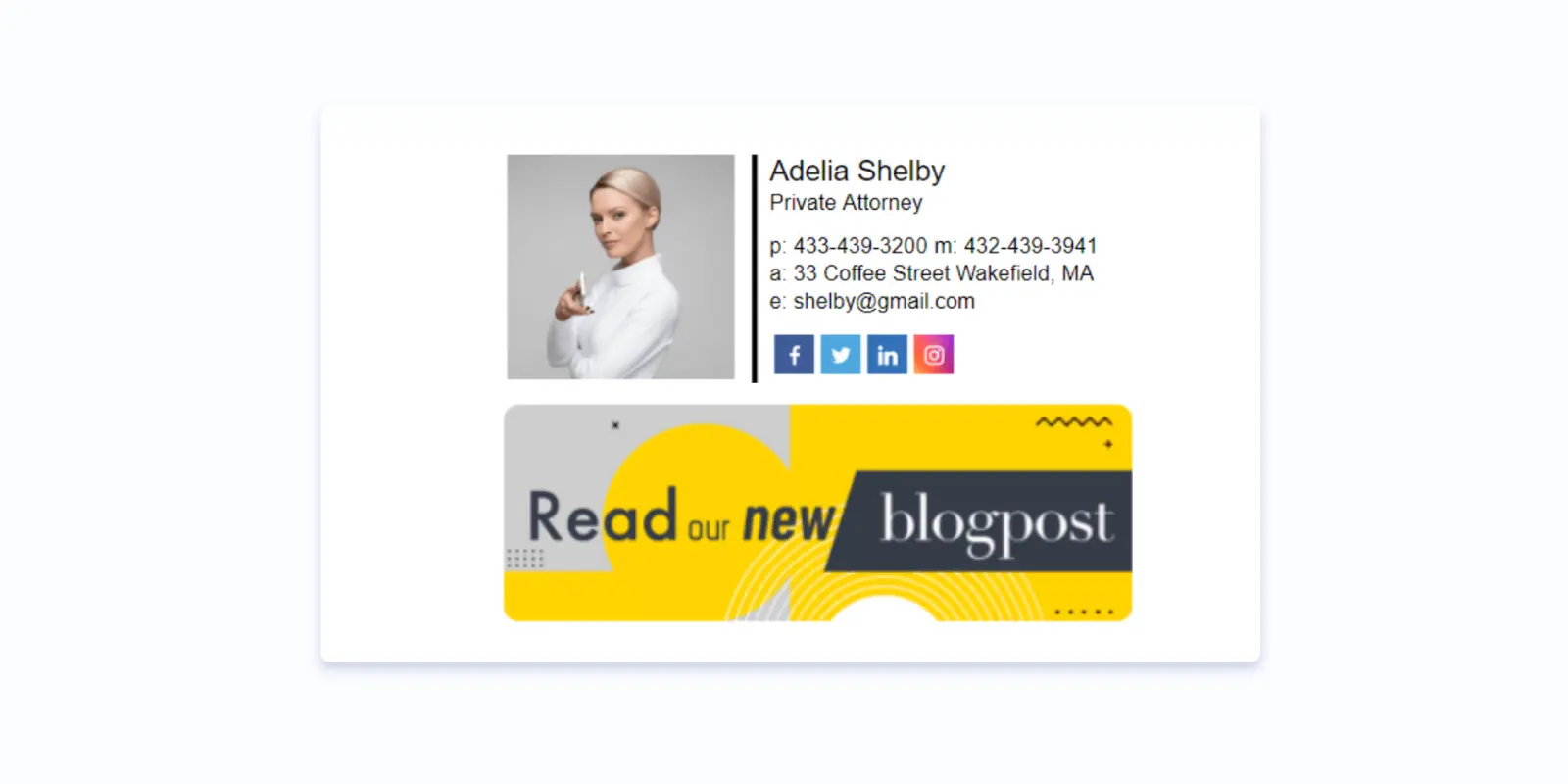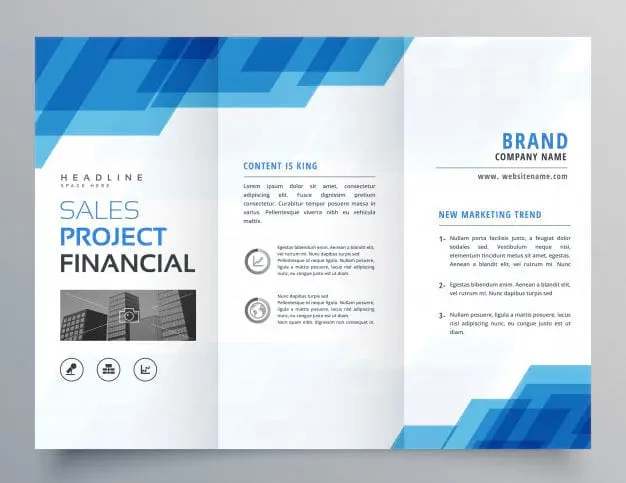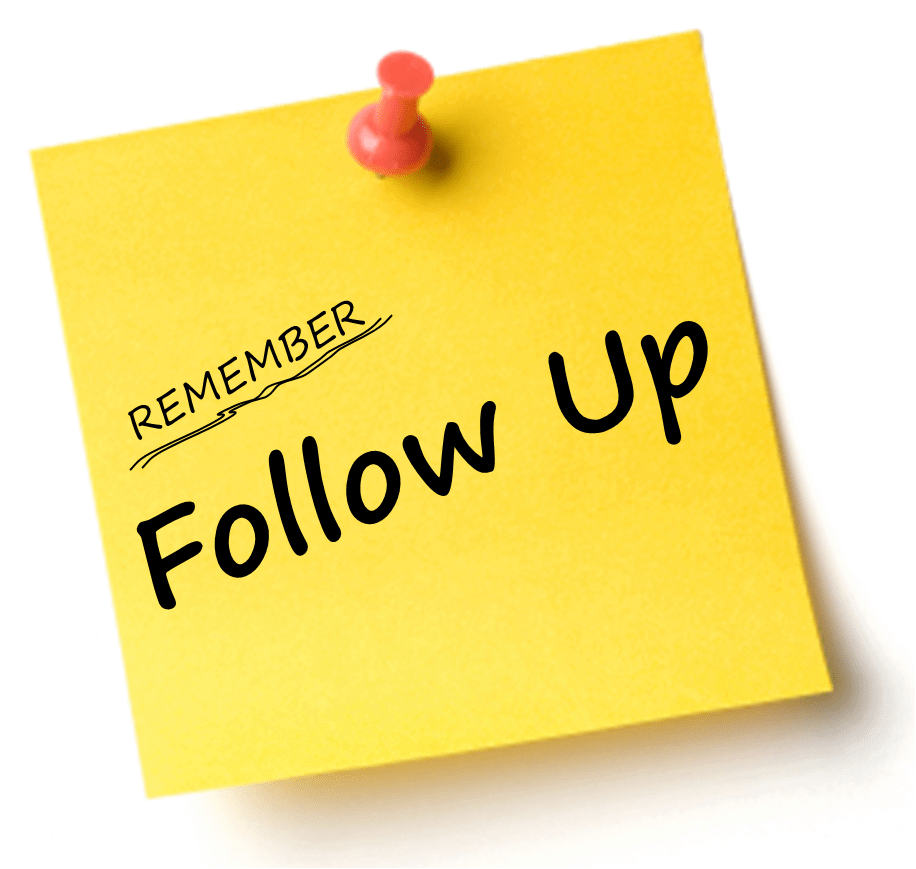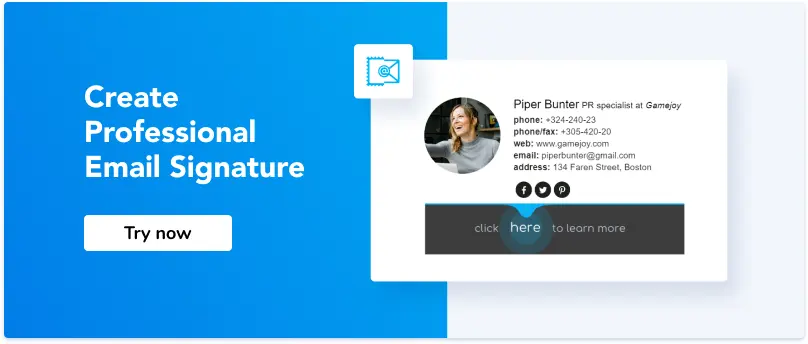How to Write Super Cool Thank-You Letters after a Presentation: Best Practises and Tips
1. What is a thank-you letter after the presentation?
2. Why is it important to say thank you after a presentation?
3. Key elements of a good-thank you letter
4. Tricks and tips: how to say thank you after a presentation
5. Mistakes to avoid in a thank-you letter after a presentation
6. Samples of thank-you letters after presentations
Useful tools:
1. Newoldstamp - Email signature marketing
2. Mailchimp - Email builder and sender
3. Reply.io - Personal email outreach, calls, and tasks
4. Mailtrack - Email link opens tracking
5. Canva - Online tool for making designs
You’ve just successfully presented your product to a potential customer. Congrats! You’ve made it halfway through to the sale. “Wait. isn’t the work done at this point?” you might ask yourself. No way! According to InTouch, only 2% of sales happen after the first meeting. It means you’re still to put in some effort before you can celebrate. Luckily for you, you’re now in the most pleasant stage of the sales process. Now it is all about effective two-way communication with a prospective customer. The prospect has dedicated some time to you; they have heard you and are now considering the purchase. Unless they forget about you altogether. Don’t let them do that by sending them a thank-you note.
Stay with us to learn more about thank-you letters that work. We’ll answer the following questions for you:
- What is a post-presentation thank-you letter?
- How and when do you thank someone for a presentation attendance?
- What should you include in your email?
- How to increase the chances of further cooperation with the recipient?
- And, finally, what do sample thank-you letters after a presentation look like?
Let’s get started with the basics.
What is a thank-you letter after the presentation?
What is this thank-you letter that you write after a prospective client has watched your presentation?
Basically, it’s a follow-up note that you write to your prospective clients after meeting with them (face-to-face or via phone). It’s an email in which you thank the people for taking the time to learn about your business and its product. It can also be a handwritten note, a postcard, or a phone call.
A handwritten note is sometimes even better. However, you never know when it’s going to be delivered to your prospect. For example, when the potential client is thousands of miles away, and you had your meeting over Skype, sending a postcard might be not the best decision.
While each medium has its advantages, we’ll focus here on the email, as it:
- is something that your prospect receives immediately
- allows you to fill in the information gaps by providing more materials
- allows your prospect the time to consider your offer once again
- is a non-pushy way to remind them of yourself
We will talk here about the product demonstrations which are your sales team’s area of expertise. You can, undoubtedly, extrapolate the information here onto other types of presentations:
- Your company presentation at an industry event
- A roadmap presentation to your team
- A project presentation to your stakeholders
- A digital presentation of your idea to investors (your elevator pitch)
- An informative speech on a specific topic
Now, let’s get to the next subtopic and talk about why thank-you emails are so important.
Why is it important to say thank you after a presentation?
Aside from obviously, showing appreciation, follow-up thank-you notes have a greater purpose. In fact, there are a number of objectives that you can reach with the help of a thank-you email.
- It serves to strengthen the relationship between your business and your potential customer.
- It reinforces the value that you have already generated.
- It facilitates further conversation through questions and answers to them.
- It helps you build trust with your prospective customers.
- It gives you a chance to stand out from your competitors.
- It creates an additional sales opportunity by adding the missing arguments and filling in the informational gaps.
- It speeds up the sales process.
In general, for any business, a thank-you letter after a presentation should be a vital component of their branding strategy. It’s not just an additional sales tactic, but a mere gesture of politeness and a way of telling your prospects that you remember about them and their needs.
Your follow-up email is your chance to remind you once again and to highlight the benefits of your cooperation. In it, you can strengthen your point and provide additional value. With its help, you can create a lasting impression and make sure it’s a positive one.
Now that we’ve convinced you of the importance of follow-up letters, let’s move on to the practical part. In the next paragraph, we’ll talk about the essential components of a thank-you email.
Key elements of a good-thank you letter
What makes your follow-up letter effective? How do you make sure that your addressee opens it? What do you write inside to keep your recipient engaged? What do you write in it? We suggest that you think about the answers to those questions right away and start preparing your sample thank-you letter after a presentation in advance.

A thank-you email must be not only polite but also memorable and attention-grabbing. But, first and foremost, it must follow the proper structure. To help you with that, we’ve shortlisted the following components for you.
Write a robust subject line
A great subject line is a key to your email opens. You will need to craft something that grabs the attention, stands out from the rest of the inbox content, and immediately suggests what the email is about. You can try the following:
- let it summarize the email’s content;
- make it personalized;
- make it brief — no more than 65 characters long;
- ask a question.
It needs to be relevant to your message. If you are thanking a person, include “thanks” in your subject, and if you’ve attached additional materials, hint at this as well.
Importantly, keep your subject line short, up to 65 characters. This way, it can be displayed entirely in the Inbox on desktop computers. In case your recipient reads their emails on a mobile device, you should either fit it into 30 characters or make sure that the first 30 characters encompass the central message.
Consider including the recipient’s name in the subject line. Personalizing your email from the start might give you an advantage over generic messages. But first, make sure it looks natural. An email writing assistant can help you keep the tone right while adding names or specific details.
Examples:
Thanks for your time with [product] yesterday
[Name], here are some answers to your questions re [product]
Follow up from [your name] / [your company] and your questions answered
Start with the words of gratitude
Even if you’ve included a “thank you” in the subject line, you should still begin your email by thanking the prospect for their time. You must understand that they have spent a part of their day on listening to you. Instead of hearing out your competitors. Or, rather than simply spend it on some other important assignments.
Remember that the phrase “Thank you for the meeting” is not enough. You need to be more specific than that. Thank people for taking the time to view your product, for considering your solution, or for discussing their business needs with you. Still, remember to be sincere when thanking another person. Either write only what you mean or just be polite. In fact, there are a number of things you can be grateful for:
- Attending the presentation
- Dedicating you some of their time
- Showing their interest in your solution
- Asking you some point-on questions
And so on...
Add a short presentation summary
After the words of gratitude, provide a brief recap of the presentation. First of all, don’t expect your prospect to remember everything you showed them. Secondly, this is your chance to highlight certain points that they might have missed out on (and which, for example, constitute your advantage over competitors).
Imagine a situation where your contact person is considering your solution together with five other products from your competitors. How well do you think your prospect will remember the details of each particular meeting?
- List all the main points that were covered in the presentation.
- Use bullet points to make the summary more readable.
- Recite your prospect’s key concerns and address them right away.
- Include the agreement which you’ve both reached.
Always mention the date, time, and topic of your meeting. This makes it easier for the addressee to find your email later by merely entering the date in the search box.
Follow up on questions
Now it’s time to include all the additional information that you find appropriate, relevant, and important. For a start, your prospect might have asked you questions that remained unanswered during the presentation. This is your chance to answer them. Besides, it will show the recipient that you remember their concerns and that you’re not withdrawing from an answer. Failing to do so will have a negative impact on the trust towards you and can also badly affect your reputation.
You can encourage them to ask even more questions, which will move the conversation forward. Alternatively, you can ask your own questions, such as, “Which features do you think are most beneficial for your business?” or “What would you like to improve about [the product]?”
Finish with a professional closing
Bear in mind that your thank-you note is a part of your business communication. Keep the style and format of your email professional. Always use a professional closing with your thank-you email. The usual “Best regards” with your name only doesn’t suffice. You must have your customized email signature ready for all kinds of business communication.
What are the main components of your signature? Let’s go through them quickly:
- Your name
- Your position with the company
- Company’s name
- Corporate logo
- Company’s website URL (Our data shows a whopping 91.2% of respondents find this valuable!)
- Business phone number
- Social icons

If you need more visual examples of email signatures, see our dedicated page. If you want to create an email signature use a professional solution.
Now that we’ve covered the basics of how to say thank you after the presentation in an email, let’s get to the tips and tricks. Below, you will learn how to make your follow-up thank-you note more effective.
Tricks and tips: how to say thank you after a presentation
Keep in mind that a thank-you letter after your sales presentation is not just a polite “must,” but also a powerful tool that can help you to reach your sales and business goals. Your task here is to make sure that your email:
- looks professional,
- feels polite and not sales,
- has immaculate grammar,
- brings value to the recipient,
- is perfectly timed,
- and facilitates the conversation.
So let’s proceed to the practical part.
Use a proper tone of voice
Your tone of voice is everything. It must be aligned throughout not just the current thank-you email, but also throughout your entire business correspondence with your prospective and existing customers. Be always polite and professional with your recipients. Be informative without sounding too smart and by no means salesy.
You must have your corporate voice and style guidelines at hand, based on your company’s values and principles. You should also take your buyer persona into account. If your product is meant for a younger audience and startups, write in a friendly rather than formal voice. And if your business caters to the more respectable audience (the C-suite and corporations), then use more elaborate language (but no jargon, unless you’re dealing with a niche group of professionals exclusively).
Make it personal and relevant
Another mistake would be to write a generic follow-up message. Under no circumstances should you copy and paste a thank-you note written for another customer. Better start writing your email from scratch while having a particular person in mind, the addressee. Use the name of the person, preferably more than once throughout your letter. Mention specific things that are relevant to the particular recipient, such as their industry or details about their business (which they have shared with you).
Avoid mentioning things that are irrelevant to the current situation. And don’t limit yourself to sharing some personal details with them. Even if you are friends with your prospect, keep personal relationships apart from business ones.
Try to grab attention from the first sentence
In your follow-up email, you grab the recipient’s attention twice: firstly, with a relevant subject line, and secondly, with the very first sentence. Address the person and thank them for something specific. Make it clear that you have understood their needs and are eager to start working on the optimal solution. Something like that would work: “Hi John, thank you for discussing with me your current marketing challenges earlier today. I hope we can address them together with ProductZ’s help.”
Add your presentation to the email
There is no better way to keep the presentation fresh in the minds of your prospects than to attach this very presentation to your follow-up email. It will serve as a good point of reference for your contact if they happen to forget something. Additionally, it will show them that you are transparent and don’t keep anything to yourself only.

Make sure that the version of your presentation that you are attaching is fully consistent with the one that you showed them during your meeting with them. It is even better when you complement it with additional notes and highlights.
Make it look good and play with formatting
People are visual beings. Even well-read people will be uncomfortable seeing an uninterrupted chunk of text in the email. Make it super readable.
- If you have more than one logical part, break your text into paragraphs.
- If you have long sentences, break them into shorter ones.
- If you have any lists, add bullet points.
- If you have steps, number them.
- If you want to emphasize a specific statement, make it bold or highlight it with color.
Use the Hemingway app to ensure the readability of your emails.
Use readable fonts and lots of white space. Arrange your information logically, with the most important pieces of information in the beginning.
Check your grammar
Even if your email is ultimately professional and engaging, a mere typo can be a major turnoff. So pay close attention to what you are writing. Read the email carefully before sending it. Even better, read it several times. The rule of thumb is to spend even more time on editing and proofreading your message than on writing it.
If you have doubts regarding your grammar (for example, if you are not a native speaker), show your email to someone whose writing is immaculate. You might also find apps like Grammarly useful to keep your messages well-refined.
.png?1714483598)
Answer all questions
It often happens so that your prospective customer asks you questions during the presentation, to which you don’t have immediate answers. You shouldn’t view this as a problem. Instead, look at this as an opportunity for your further communication.
Take your time and write down the questions that they have asked you. Then, answer them in writing. Refer to the questions in the follow-up email and provide a comprehensive answer to each of them. Be specific when possible. For example, when the potential client asks you “How would the [feature] of [your product] help us improve our sales?”, give them a description of the solution you see followed by value estimates.
Ask additional questions
A follow-up email is also your chance to show your prospects that you are willing to work extra on your product to help them solve their particular problems. Ask them how exactly you can do that. “What do you think could be improved in [your product]?” “What important features are missing?” “If you chose our competitors, why exactly?”
Be ready for honest feedback. Even if you don’t like the answer, it will help you gain vital insights that will eventually help you win future customers.
Educate even more
Even if you have included everything in your presentation, there will be some areas left uncovered. Before writing a thank-you letter, think about what else you could tell about your product. Is this about additional features that you didn’t mention? Are there any extra uses for your product that you didn’t tell about, which you believe would be beneficial for your prospective customer?
Try to bring in some extra value in your email. You always can share additional information that will help to understand your product better. Still, don’t limit it to your product only. Just think about what your recipient would find useful and share it. It can be even a link to a third-party article. Write about those at the end of your email. You can even suggest the recipient arrange another meeting dedicated to the areas that you have missed.
Create an additional brochure
There is no need to educate your prospect on your company’s product in the email body. This will make it too long to read and too hard to concentrate. Instead, create a product brochure and attach it to your follow-up letter along with the presentation itself.

The information in the brochure must not repeat the info from the presentation but complement it. It can be an extended overview of the product or a Q&A handbook. It’s up to you to pick the right format. Just keep in mind that your brochure should be readable, well-structured, visually appealing, and informative. You might consider hiring a designer to do the layout for you.
Create follow-up sequences
In the long run, one thank-you email is never enough. Aim for extended communication by creating a follow-up series. Stay updated on the decision-making process of your prospective customer. Let them know you are interested in working with them. Make yourself available for any further or additional inquiries and follow-up meetings.

You can break your informational output into a series: send your presentation along with the immediate thank-you email and your brochure along with the following one. Encourage questions in your third letter. At the same time, stay away from bombarding your recipient with correspondence: allow them some time to contemplate your product and its advantages. Send the first note immediately after the meeting, the next one in 3 days, then follow up after a week or so. Also, don’t forget to provide value in each of your letters.
Remember that timing is everything
Bear in mind that your prospect might have viewed multiple presentations of products similar to yours. If you don’t reconnect with them again, you might lose a client to the competition. Therefore, send your thank-you email as soon as possible, preferably on the same day that the demonstration took place. Otherwise, a competitor might take your potential client from you.
Even if your prospect didn’t have any communication with other solution providers, your follow-up letter might help trigger their decision in your favor.
Do you feel overwhelmed with all the information? Let’s now switch to sample thank-you letters after a presentation. They will help you visualize what a good follow-up email should look like.
Mistakes to avoid in a thank-you letter after a presentation
It might seem that writing a thank-you letter after meeting your prospect is a no-brainer. Just make sure you stick to the structure and follow the best practices. However, there are some crucial mistakes salespeople often make, which can cost you a relationship with your potential customer. We’ve listed some of those mistakes below.
Asking for a favor
A thank-you letter must be all about your prospect and never about you. Don’t talk about yourself or ask for favors. Your task is to show your gratitude and provide additional value. That’s about it. Fitting in any personal requests will be just out of the line here.
Sending it to the wrong (or only one) person
Always make sure you’re sending your email to the right recipient. Check that the name of the person and the company in your address line match the names in your message. In case you had a meeting with several people, include them all in your email. Otherwise, it might turn out that the real decision-maker is the one you’ve left out in your correspondence.
_(1).png?1714373954)
Not adding additional contact information
Provide all the ways to contact you. If you suggest having a call sometime later, make sure you’ve included the phone number or your Skype name. All in all, your contact information should be in your business signature.
Using a generic template
Nothing is worse than an impersonal “thanks” letter after a sales meeting. If you have a ready-made template, adjust it to every particular case and personalize it for each prospect you are communicating with.
Flattering instead of complimenting
Taking flattery for a compliment is easy. However, your recipient will always tell them apart. Don’t praise your addressee for something that you are not sure about. Express your admiration only for things that you really find fascinating or inspiring.
Samples of thank-you letters after presentations
In this section, we are molding the information above into a few practical templates for post-presentation emails. Feel free to use them but don’t forget to replace the placeholders with your details.
Below are the examples: thank-you letters after a presentation.
•••Sample thank-you email #1 •••
Subject line: Following up on our today’s call re [your product]
Hello [Name],
Thank you for our lunchtime conversation.
I am grateful for the time you and your team took to see [your product] in action. It flatters me that the key features of our solution address your immediate business needs, as you have mentioned.
For your convenience, below is a quick recap of the presentation:
- We have talked about how [Your product’s name] can help you [drive more traffic to your website], [quickly generate leads], and [boost your sales].
- We have covered creating and managing individual profiles within your company’s account and delegating tasks.
- We have tried creating campaigns and managing them from your Dashboard.
- We have discussed the Results and Reporting section.
As promised, please find the link to the recording below:
[link to your presentation recording]
I will follow up with you once again later this week. Meanwhile, feel free to message or call me if you have any questions.
Have a wonderful day!
[Your Name]
[Your business email signature]
••• Sample thank-you email #2 •••
Subject line: Answering your questions about [your product]
Hi [Name],
First of all, let me thank you for our call today. It was a pleasure meeting you and learning more about how your company disrupts the fintech industry.
As promised, I’ve attached the presentation of [your product] below. If you have any further questions, feel free to contact me via email or just call me at [your phone number].
I appreciate all the spot-on questions that your colleagues have asked.
One question from [employee’s name] was regarding integration with other services. I have attached the full list of our integrations to this email. We are continuously working on expanding their list. Please feel free to make your suggestions.
[Employee’s name] asked about the trial version. I’ve consulted with our CEO, and she agreed to a 3-month Premium trial. I hope that your team can try and feel all the advantages of [your product] during this time.
Please let me know what you think.
Kind regards,
[Your Name]
[Your business email signature]
••• Sample thank-you email #3 •••
Subject line: A pleasure speaking with you today. Here’s a quick recap
Hello again [Name],
I’m incredibly grateful for our conversation earlier today. I’m excited that you’ve enjoyed our [your product].
For your future reference, here is a quick recap of our meeting.
- I have shown you the key features of [your product] and how they can help you achieve your [marketing] goals.
- You, [employee’s name], and [employee’s name] have tried creating accounts and test campaigns.
- You have seen the Analytics page and learned about the insights you obtain.
- Your team has asked me some important questions. I have written down the answers in a separate document (see attachment #1).
- You have inquired about the alternative pricing plans. Please see the plans compared in attachment #2.
- We have agreed on the second call in a week’s time, [date, time].
Also, please find the presentation PDF in attachment #3.
If you have any questions, I am available at this email address or [your phone number]
Looking forward to our conversation next week!
Kind regards,
[Your Name]
[Your business email signature]
Conclusion
As you can see, writing a thank-you email after a successful sales presentation is a total must. It is not only a polite way to remind your prospects of yourself but also a chance to strengthen your further communication and address any issues that were not covered during the presentation.
To make sure your follow-up note stands out and creates a good impression, include:
- A powerful subject line
- A thank you
- A brief recap of the conversation
- Answers to your prospect’s questions
- Any additional materials that might be useful
- Your business signature
In case you need a reference point, feel free to use our samples of thank-you letters after the presentation above.
Happy hunting!
On a different note, what if you’ve conducted a sensational presentation, your prospect has already agreed on another meeting, but you cannot make it? You’ll need a cancellation email asap. Learn how to write polite meeting cancellation emails in our earlier article.




